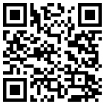
在Linux操作系统上,iwconfig命令可配置无线网络接口。
查看英文版
1 iwconfig 运行系统环境
2 iwconfig 描述
3 iwconfig 语法
4 iwconfig 例子
Unix&Linux
Iwconfig与ifconfig相似,但专用于无线接口。它用于设置特定于无线操作的网络接口参数(例如,无线频率)。Iwconfig也可以用于显示那些参数和无线统计信息(从/ proc / net / wireless中提取)。
所有这些参数和统计信息均取决于设备。每个驱动程序将仅提供其中一些驱动程序,具体取决于硬件支持,并且值的范围可能会更改。有关详细信息,请检查每个设备的手册页。
查看英文版
iwconfig [interface]
iwconfig interface [essid X] [nwid N] [mode M] [freq F] [channel C][sens S ]
[ap A ][nick NN ] [rate R] [rts RT] [frag FT] [txpower T] [enc E]
[key K] [power P] [retry R] [modu M] [commit]
iwconfig --help
iwconfig --version
参量
有关这些参数的扩展说明以及每个参数的示例,请参见示例。
|
essid |
设置ESSID(或网络名称-在某些产品中也可能称为域ID)。 |
|
nwid |
设置网络ID。 |
|
nick |
设置昵称或电台名称。 |
|
mode |
设置设备的操作模式,具体取决于网络拓扑。 |
|
freq/channel |
在设备中设置工作频率或信道。 |
|
ap |
如有可能,强制将卡注册到该地址给定的访问点。 |
|
rate/bit |
对于支持多种比特率的卡,将比特率设置为b / s。 |
|
txpower |
对于支持多种发射功率的卡,以dBm为单位设置发射功率。 |
|
sens |
设置灵敏度阈值。这定义了卡对不良操作条件(低信号,干扰)的敏感程度。 |
|
retry |
设置MAC可以重试传输的最大次数。 |
|
rts |
RTS / CTS在每次发送数据包之前添加一次握手,以确保通道畅通。 |
|
frag |
设置最大片段大小,该大小始终小于最大数据包大小。 |
|
key/enc |
用于操纵加密或加扰密钥和安全模式。 |
|
power |
用于操纵电源管理方案的参数和模式。 |
|
modu |
强制卡使用一组特定的调制。 |
|
commit |
强制卡应用所有待处理的更改。 |
查看英文版
例子
iwconfig eth0 essid any
iwconfig eth0 essid "My Network"
iwconfig eth0 essid -- "ANY"
essid设置 ESSID(或网络名称 - 在某些产品中,它也可能称为域 ID)。ESSID 用于标识同一虚拟网络的单元。
与定义单个单元的 AP 地址或 NWID 相比,ESSID 定义了一组通过中继器或基础结构连接的单元,用户可以在其中透明地漫游。
对于某些卡,您可以禁用 ESSID 检查(ESSID 混杂)与关闭或任何(和上重新启用它)。
如果您的网络的 ESSID 是特殊关键字之一(关闭、打开或任何),您应该使用-- 来转义它。
例子
iwconfig eth0 nwid AB34
iwconfig eth0 nwid off
nwid设置网络 ID。由于所有相邻的无线网络共享相同的介质,因此此参数用于区分它们(创建逻辑并分网络)并标识属于同一单元的节点。
此参数仅用于 802.11 之前硬件,802.11 协议使用此函数的 ESSID 和 AP 地址。
对于某些卡,您可以禁用网络 ID 检查(NWID 混杂)关闭(并打开以重新启用它)。
例子
iwconfig eth0 nickname "My Linux Node"
nick设置昵称或站名称。一些 802.11 产品确实定义了它,但就协议(MAC、IP、TCP)而言,这一点并不使用,在配置方面则完全没用。只有某些无线诊断工具可以使用它。
例子
iwconfig eth0 mode Managed
iwconfig eth0 mode ad hoc
mode设置设备的操作模式,这取决于网络拓扑。该模式可以是临时的(网络仅由一个单元组成且没有接入点)、托管(节点连接到由多个接入点组成的网络,具有漫游功能)、Master(节点是同步主机或充当接入点)、中继器(节点在其他无线节点之间转发数据包)、辅助(节点充当备份主/中继器)、监视器(节点不与任何单元关联且被动监视频率上的所有数据包)或"自动"。
freq/通道示例
iwconfig eth0 freq 2422000000
iwconfig eth0 freq 2.422G
iwconfig eth0 channel 3
iwconfig eth0 channel auto
freq 和channel道分别设置设备中的工作频率或通道。低于 1000 的值表示通道数,大于 1000 的值是 Hz 中的频率。您可以将后缀 k、M 或 G 追加到值(例如,2.46 GHz 频率的"2.46G")或添加足够的"0"。
通道通常从 1 开始编号,您可以使用iwlist获取通道总数、列出可用频率以及将当前频率显示为通道。根据规定,某些频率/通道可能不可用。
使用托管模式时,接入点通常指示通道,驱动程序可能会拒绝频率设置。在临时模式下,频率设置只能在初始单元格创建时使用,并且在加入现有单元格时可能会忽略。
您还可以使用关闭或自动让卡拾取最佳通道(在受支持时)。
例子
iwconfig eth0 ap 00:60:1D:01:23:45
iwconfig eth0 ap any
iwconfig eth0 ap off
如果可能,ap强制卡注册到地址给出的接入点。此地址是接入点的单元标识,如无线扫描报告,可能不同于其网络 MAC 地址。如果无线链路是点对点,请设置链路另一端的地址。如果链接是临时的,则设置临时网络的单元格标识。当连接质量过低时,驱动程序可能会恢复到自动模式(卡选择范围内的最佳接入点)。您还可以使用OFF 重新启用自动模式而不更改当前接入点,或者您可以使用任何或自动强制卡与当前最佳接入点重新关联。
速率/位示例
iwconfig eth0 rate 11M
iwconfig eth0 rate auto
iwconfig eth0 rate 5.5M auto
对于支持多个比特率的卡,速率以 b/s 表示比特率。比特率是位通过介质传输的速度,由于介质共享和各种开销,链路的用户速度较低。
您可以将后缀 k、M 或 G 追加到值(十进制乘数 :10^3、10^6 和 10^9 b/s)中,或添加足够的"0"。低于 1000 的值是特定于卡的,通常是比特率列表中的索引。使用自动选择自动比特率模式(回退到噪声通道上的较低速率),这是大多数卡的默认值,并固定为恢复到固定设置。如果指定比特率值并追加自动,则驱动程序将使用低于 和 等于此值的所有比特率。
例子
iwconfig eth0 txpower 15
iwconfig eth0 txpower 30mW
iwconfig eth0 txpower auto
iwconfig eth0 txpower off
对于支持多个传输功率的卡,txpower以 dBm 设置传输功率。如果 W 是瓦特中的功率,则 dBm 中的功率为 P = 30 = 10.log(W)。如果该值由mW 后缀,则将自动转换为 dBm。
此外,开和关启用和禁用收音机,以及自动和固定启用和禁用电源控制(如果这些功能可用)。
感官示例
iwconfig eth0 sens -80
iwconfig eth0 sens 2
sen 设置灵敏度阈值。这定义了卡对恶劣工作条件(低信号、干扰)的敏感性。正值假定为硬件使用的原始值或百分比,负值假定为 dBm。根据硬件实现,此参数可以控制各种功能。
在现代卡上,此参数通常控制切换/漫游阈值,这是硬件与当前接入点保持关联的最低信号电平。当信号电平低于此阈值时,卡开始寻找新的/更好的接入点。某些卡可能会使用错过的信标数量来触发此事件。对于高密度接入点,较高的阈值确保卡始终与最佳 AP 关联,对于低密度的 AP,较低的阈值可最大限度地减少失败的切换数量。
在更古老的卡片上,此参数通常控制延迟阈值,即硬件认为通道忙的最低信号电平。超过此阈值的信号电平使硬件抑制其自身的传输,而弱于此的信号将被忽略,并且硬件可以自由传输。这通常与接收阈值(硬件尝试数据包接收的最低信号电平)紧密相连。正确设置这些阈值可防止卡在仍然接收弱传输时浪费时间在背景噪音上。现代设计似乎自动控制这些阈值。
重试示例
iwconfig eth0 retry 16
iwconfig eth0 retry lifetime 300m
iwconfig eth0 retry short 12
iwconfig eth0 retry min limit 8
大多数卡具有 MAC 重新传输,有些允许设置重试机制的行为。
要设置最大重数,请输入限制"值"。这是一个绝对值(不带单位),也是默认值(未指定任何操作时)。要设置 MAC 应重试的最大时间长度,请输入生存期"值"。默认情况下,此值以秒为单位,追加后缀 m 或指定值(以毫秒或微秒为单位)。
您还可以添加短、长、最小和最大修改器。如果卡支持自动模式,则它们定义限制或生存期的限制。其他一些卡根据数据包大小定义不同的值,例如在 802.11分钟限制中是短重试限制(非 RTS/CTS 数据包)。
rts 示例
iwconfig eth0 rts 250
iwconfig eth0 rts off
rts在每次数据包传输之前添加握手,以确保通道清晰。这会增加开销,但在隐藏节点或大量活动节点的情况下提高性能。此参数设置节点向其发送 RTS 的最小数据包的大小;等于最大数据包大小的值将禁用该机制。您还可以将此参数设置为自动、固定或关闭。
碎片示例
iwconfig eth0 frag 512
iwconfig eth0 frag off
碎片允许设备在介质上传输的较小片段中拆分 IP 数据包。在大多数情况下,这会增加开销,但在非常嘈杂的环境中,这会减少错误损失,并允许数据包通过干扰突发。此参数设置始终低于最大数据包大小的最大片段大小。此参数还可以控制某些卡上可用的帧突发,即将多个 IP 数据包一起发送的能力。如果片段大小大于最大数据包大小,则将启用此机制。您还可以将此参数设置为自动、固定或关闭。
键/enc 示例
iwconfig eth0 key 0123-4567-89
iwconfig eth0 key [3] 0123-4567-89
iwconfig eth0 key s:password [2]
iwconfig eth0 key [2]
iwconfig eth0 key open
iwconfig eth0 key off
iwconfig eth0 key restricted [3] 0123456789
iwconfig eth0 key 01-23 key 45-67 [4] key [4]
密钥用于操作加密或争用密钥和安全模式。要设置当前加密密钥,请以十六进制数字输入密钥XXXX-XXXX- XXXX-XXXX或XXXXXXXX。要设置当前键以外的键,请预附或追加[索引]到密钥本身(这不会改变什么是活动键)。还可以使用s:前缀将密钥输入为 ASCII 字符串。当前不支持密码短语。
要更改哪个键是当前活动键,请输入[索引](不输入任何键值)。
off和on禁用和重新启用加密。安全模式可能是打开的或受限的,其含义取决于使用的卡。对于大多数卡,在打开模式下不使用身份验证,并且卡也可能接受非加密会话,而在受限模式下,仅接受加密会话,并且卡将使用身份验证(如果可用)。如果需要设置多个键,或设置密钥并更改活动密钥,则需要使用多个键指令。参数可以按任何顺序排列,最后一个参数优先。
例子
iwconfig eth0 power period 2
iwconfig eth0 power 500m unicast
iwconfig eth0 power timeout 300u all
iwconfig eth0 power saving 3
iwconfig eth0 power off
iwconfig eth0 power min period 2 power max period 4
电源用于操作电源管理方案参数和模式。要设置唤醒之间的期间,请输入期间"值"。若要在返回睡眠状态之前设置超时,请输入超时"值"。要设置一般省电级别,请输入节省"值"。您还可以添加最小值和最大值修改器。默认情况下,这些值以秒为单位,追加后缀 m 或指定值(以毫秒或微秒为单位)。有时,这些值没有单位(信标周期数、停留时间数、百分比或类似值数)。
关闭和打开禁用和重新启用电源管理。最后,您可以设置电源管理模式到所有(接收所有数据包)、单播(仅接收单播数据包、丢弃多播和广播)和多播(仅接收多播和广播、丢弃单播数据包)。
例子
iwconfig eth0 modu 11g
iwconfig eth0 modu CCK OFDMa
iwconfig eth0 modu auto
modu强制卡使用一组特定的调制。现代卡支持各种调制,有些是标准的,如802.11b或802.11g,有些是专有的。此命令强制卡仅使用命令行上列出的特定调制集。这可用于修复互操作性问题。可用调制列表取决于卡/驱动程序,可以使用iwlist 调制显示。请注意,某些卡/驱动程序可能无法选择独立列出的每个调制,有些可能作为一个组来。您还可以将此参数设置为自动,以让卡/驱动程序尽力而为。
例子
iwconfig commit
某些卡可能不会立即应用通过无线扩展完成的更改(他们可能等待聚合更改或仅在通过ifconfig提起卡时应用更改)。此命令(如果可用)强制卡应用所有挂起的更改。
这通常不需要,因为卡最终会应用更改,但可用于调试。
显示的内容
对于支持无线扩展的每个设备,iwconfig 将显示使用的 MAC 协议的名称(专有协议的设备名称)、ESSID(网络名称)、NWID、频率(或通道)、灵敏度、操作模式、接入点地址、比特率、RTS 阈值、碎片阈值、加密密钥和电源管理设置(取决于可用性)。
显示的参数的含义和值与可以设置的参数相同;有关其详细说明,请参阅上一部分。
某些参数仅以短/缩写形式显示(如加密)。您可以使用iwlist获取所有详细信息。某些参数有两种模式(如比特率)。如果该值以"+"为前缀,则意味着该参数已固定并强制为该值,如果该参数的前缀为":",则该参数处于自动模式,并且显示当前值(并且可能会更改)。
接入点/单元
等于 00:00:00:00:00:00 的地址表示卡未能与接入点关联(很可能是配置问题)。接入点参数将在临时模式下显示为单元格(原因明显),但以其他方式工作相同。
如果存在 /proc/net/无线,iwconfig也会显示其内容。请注意,这些值将取决于驱动程序和硬件细节,因此您需要参考驱动程序文档以正确解释这些值。
链接质量
链接的整体质量。可能基于争用或干扰级别、位或帧错误率、接收信号的多少、一些定时同步或其他硬件指标。这是一个聚合值,完全取决于驱动程序和硬件。
信号电平
接收信号强度(RSSI - 接收信号的强度)。可能是任意单位或dBm,iwconfig使用驱动程序元信息来解释/proc/net/无线给出的原始值,并显示正确的单位或最大值(使用 8 位算术)。在临时模式下,这可能是未定义的,您应该使用iwspy。
噪音水平
背景噪声级别(当没有数据包传输时)。信号电平的类似评论。
Rx 无效 nwid
使用其他 NWID 或 ESSID 接收的数据包数。用于检测配置问题或相邻网络存在(频率相同)。
Rx 无效的加密
硬件无法解密的数据包数。这可用于检测无效的加密设置。
Rx 无效碎片
硬件无法正确重新组装链路层片段的数据包数(很可能缺少一个)。
Tx 过度重
硬件无法传递的数据包数。大多数 MAC 协议在放弃之前会多次重试数据包。
无效
与特定无线操作相关的其他数据包丢失。
错过的信标
来自单元或我们错过的接入点的定期信标数。信标定期发送以保持单元协调,未接收信标通常表示卡范围不一。
查看英文版
未知的网友